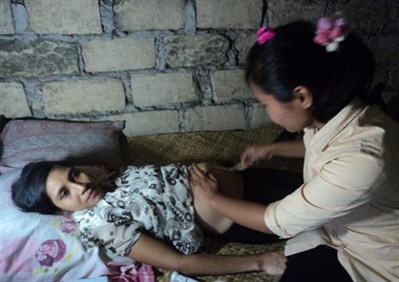 The Women Deliver Conference ran from the 28-30 May in Kuala Lumpur. It was a chance to reflect on the health and wellbeing of women and girls, particularly their sexual and reproductive health. The last UN progress report showed that there had been slow progress on Millennium Development Goal 5 which aims to improve maternal health, and an estimated 287,000 maternal deaths occurred in 2010 worldwide.
The Women Deliver Conference ran from the 28-30 May in Kuala Lumpur. It was a chance to reflect on the health and wellbeing of women and girls, particularly their sexual and reproductive health. The last UN progress report showed that there had been slow progress on Millennium Development Goal 5 which aims to improve maternal health, and an estimated 287,000 maternal deaths occurred in 2010 worldwide.
We asked Rukhsana Ahmed who is based at the Eijkman Institute for Molecular Biology in Indonesia to reflect on some of the maternal health challenges that they are experiencing in Indonesia and how REACHOUT might contribute to progress.
Q: Can you tell us a bit more about maternal health in Indonesia?
A: When thinking about health care delivery challenges in Indonesia what you need to bear in mind is that Indonesia is made up of 1000s and 1000s of islands. Although over 60% of the population live in Java there are still many people living in very rural, very sparsely populated islands. As a result accessing clinical care, in this case emergency obstetric care, when it is needed is not always straight forward. Indonesia has a fairly good number of midwives and nurses but their distribution is uneven. Numbers does not necessarily indicate outcomes or the quality of service. As a result there are just over - 200 maternal deaths per 100,000 live births; a reduction from about 400 maternal deaths per 100,00 live births in the 1990s and haemorrhage and other delivery complications are a big problem. This is something that the Government is committed to tackling to reach the MDG 5 goal in 2015.
Q: What services has the Government put in place?
A: Village midwives are the main close-to-community providers in Indonesia. They are involved with multiple health care tasks as well as obstetric work and work in village clinics (‘polindes and pustus’) or in community health centres, where they also provide outreach care and home births. Close-to-community providers encourage women to deliver in the health facilities but this does not always occur because women cannot always travel the distances necessary. A lack of strong telecommunications networks makes it difficult for women to alert health professionals when they need assistance. Cost is also a barrier to access. To support poorer people the Government has recently launched a health insurance scheme. But people in rural areas may not know about it and may not have high levels of faith in it. Even paying a small charge can put them off. A recent Government initiative, in 2011, was to create a partnership between traditional birth attendants and midwives to try and encourage the traditional birth attendants to take the women that they serve to the primary health clinics for care. A cash incentive was offered to offset losses that they might make in not looking after the women themselves. We are waiting to see what kind of impact this might have had.
Q: How will REACHOUT support maternal health interventions?
A: Research in Indonesia will focus on the village based midwives, nurses and health volunteers who have different levels of formal training but play an active role in the integrated health posts. They are working under difficult circumstances. For example, sometimes midwives posted in the villages don’t get their skills updated after their placement. We will assess the work burden of the midwives, who currently each cover three to four villages, to ascertain the extent to which human resource issues, such as high workload and the lack of regular further training and supervision, hamper the quality of service. The results of our work will be shared with Government, implementers and communities to try and inspire change.

This project is funded by the European Union.
